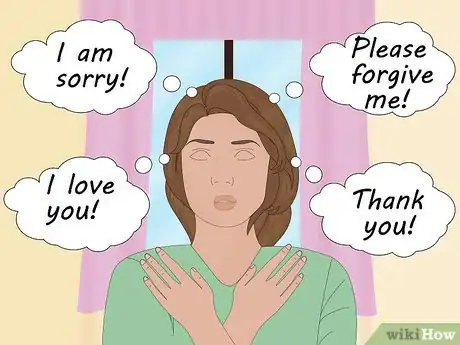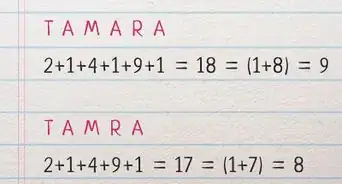wikiHow is a “wiki,” similar to Wikipedia, which means that many of our articles are co-written by multiple authors. To create this article, volunteer authors worked to edit and improve it over time.
This article has been viewed 37,146 times.
Learn more...
Ho’oponopono is a Hawaiian spiritual practice that was developed through the years as a family healing practice. The practice helps individuals and families to forgive past wrongs, conflicts, misunderstandings, and the like. It teaches that difficulties are manifestations of past wrongs as memories, and these memories influence our daily lives. The belief is that past wrongs can be healed or corrected through divine intervention. By promoting the idea that blame only compounds a problem, it provides a method of accepting responsibility for everything in one’s reality, be it physical, mental or spiritual. Accepting responsibility for everything, even other’s actions or thoughts, shifts the outlook of the practitioner to a place of strength as opposed to helplessness over external conditions, putting him in a position to affect real change.
Steps
-
1Identify the problem or conflict that has been brought to your attention. Remove any preconceptions about the subject that automatically pop into your head. For example, if the problem has to do with someone else, release the automatic thought that it is the other individual’s problem and has nothing to do with you.
-
2Take full responsibility for this problem or conflict being in your reality. Assume that everything in your world is a product of past thoughts and deeds, and the memories attached to those deeds bring the resulting problem. ‘If we can accept that we are the sum total of our past thoughts, emotions, words, deeds and actions and that our present lives and choices are colored or shaded by this memory bank of the past, then we begin to see how a process of correcting or setting aright can change our lives, our families and our society.’—Morrnah Nalamaku SimeonaAdvertisement
-
3Ask that errors in our thoughts, words, actions and deeds be cleaned. This is accomplished through a simple mantra, or prayer to Divinity/God/Love. Use the four-part prayer to ask for forgiveness.
- I love you.
- I am sorry.
- Please forgive me.
- Thank you.
-
4Trust that changes have occurred on a Divine level and that any corrections made within are corrected for all those involved. This involves the acknowledgement that we are all a part of a greater “whole”, that is, we are all connected on a higher level and there is no need to analyze, figure out, solve, manage, cope with, or control problems. All that is needed is to go directly to the Creator and ask that the error/thought/memory be corrected and cleaned. Only Divinity can do this. Divinity/Creator/Love knows us and what memory is replaying. This is merely an exercise in letting go; there is no need to invite conflict with one’s religious beliefs or non-beliefs.
Community Q&A
-
QuestionI know this spiritual, but how long before a change comes?
 Community AnswerIf you meditate at a routine, scheduled time daily, you should see results in 2 - 3 months.
Community AnswerIf you meditate at a routine, scheduled time daily, you should see results in 2 - 3 months. -
QuestionDo I close my eyes while praying? Who am I saying these statements to? What/who do I imagine while praying?
 Community AnswerYou're not required to close your eyes, but it is respectful towards your god/gods to do so. It is also respectful to the leaders who guide you, because then they know that you are paying attention to the prayer and not someone or something else. The statements are to be said to your god. You don't have to imagine anything, but just focus on what you're saying and imagine those words coming true.
Community AnswerYou're not required to close your eyes, but it is respectful towards your god/gods to do so. It is also respectful to the leaders who guide you, because then they know that you are paying attention to the prayer and not someone or something else. The statements are to be said to your god. You don't have to imagine anything, but just focus on what you're saying and imagine those words coming true. -
QuestionCan I silently repeat it in my mind instead of out loud?
 Juliet MarotzkeCommunity AnswerGod hears every word we FEEL, He knows us more than we ever can know ourselves. He knows the origin of confusing pain that we may not even know the source of. Heartfelt prayer to God is the greatest power you have, so yes, silent communication with God is more powerful than any spoken words.
Juliet MarotzkeCommunity AnswerGod hears every word we FEEL, He knows us more than we ever can know ourselves. He knows the origin of confusing pain that we may not even know the source of. Heartfelt prayer to God is the greatest power you have, so yes, silent communication with God is more powerful than any spoken words.
References
- Vitale, Joe, Hew Len Ph.D., Zero Limits, Wiley (2007)
- Lee, Pali Jae, Ho'opono, I M Publishing (2008)
- Motivatingmemes.net































































